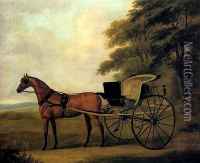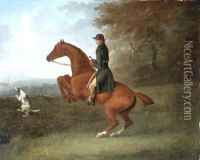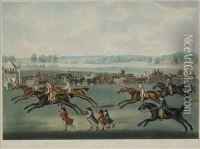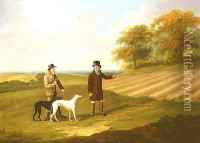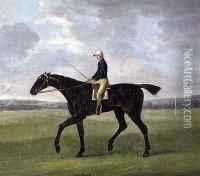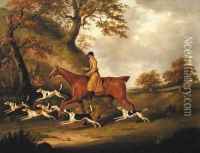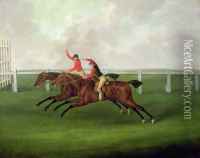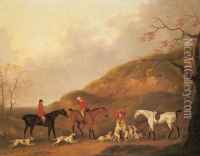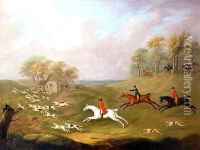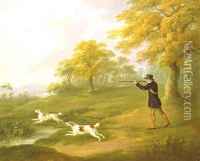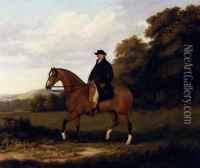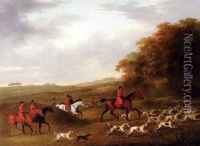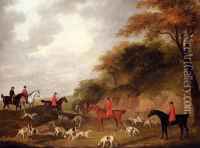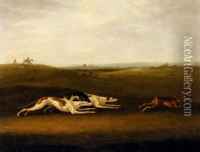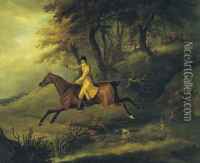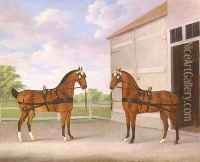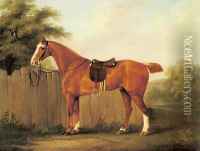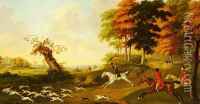John Nost Sartorius Paintings
John Nost Sartorius was an English painter, known for his depictions of animals, sporting events, and particularly equestrian subjects. Born in 1759, he came from a family of artists; his grandfather, John Nost, was a well-known sculptor, and his father, Francis Sartorius, was also a notable painter of horses and dogs.
Sartorius was active during a period that has been termed the 'Golden Age' of British sporting art. This era was characterized by a significant interest in countryside sports and the commissioning of artwork that reflected these pursuits. His paintings often captured the dynamism of horse racing and hunting scenes, which were popular pastimes among the British gentry and aristocracy.
Throughout his career, John Nost Sartorius remained true to the family tradition of painting animals with a high degree of realism and attention to detail. His work was widely appreciated by his contemporaries for its accurate representation of the various horse breeds and the excitement of the sporting events.
Despite being less well-known than some of his contemporaries like George Stubbs, Sartorius's paintings are considered important records of the sporting life and practices of the time. His depictions of horses, in particular, are celebrated for their liveliness and the skill with which he rendered these animals in motion.
Sartorius's paintings were often engraved and circulated as prints, contributing to his popularity during his lifetime. His work is represented in various art collections, both private and public, and continues to be of interest to collectors and historians of British sporting art.
John Nost Sartorius passed away in 1828, leaving behind a legacy of detailed and vibrant portrayals of 18th and early 19th-century sporting culture in England.
